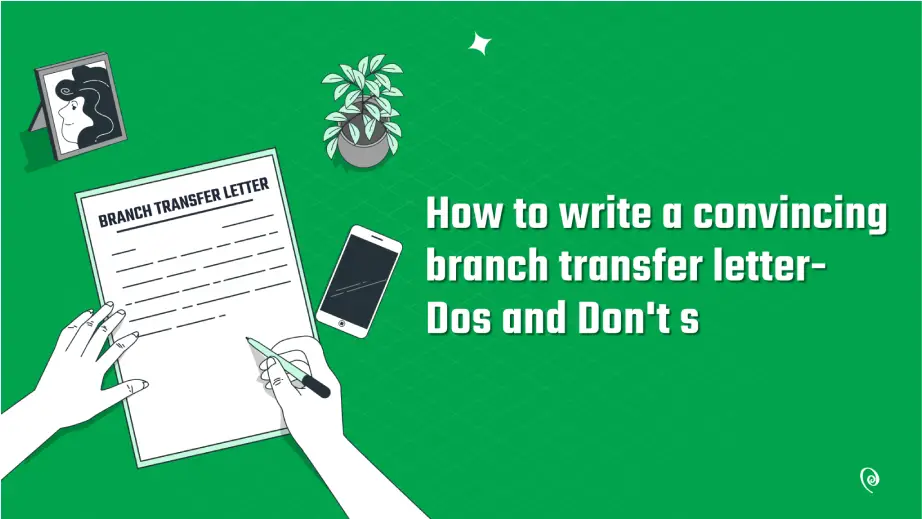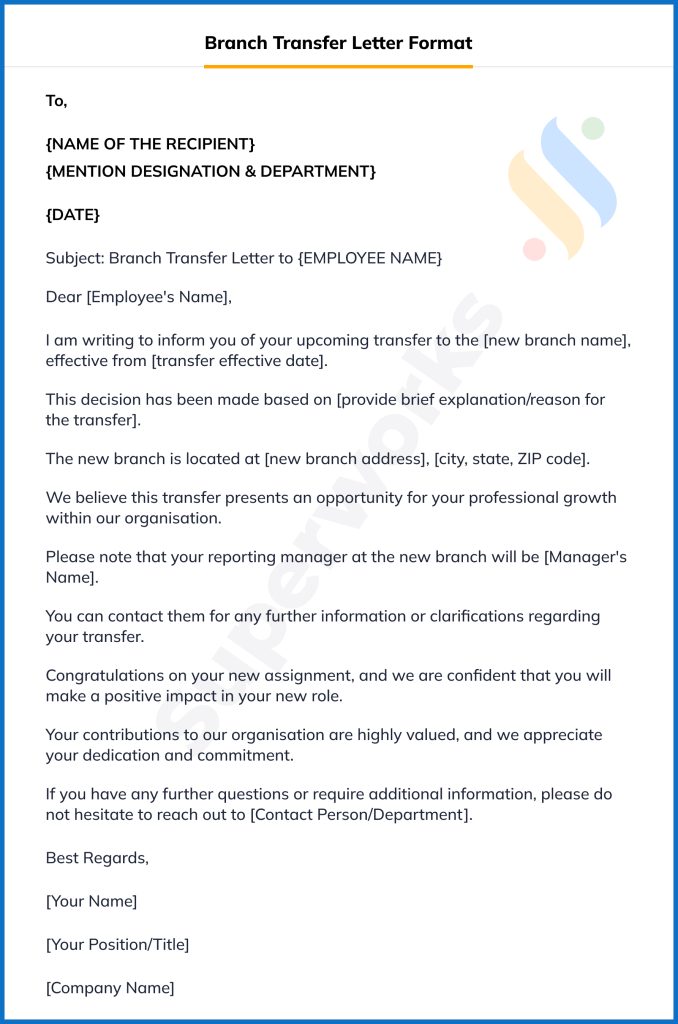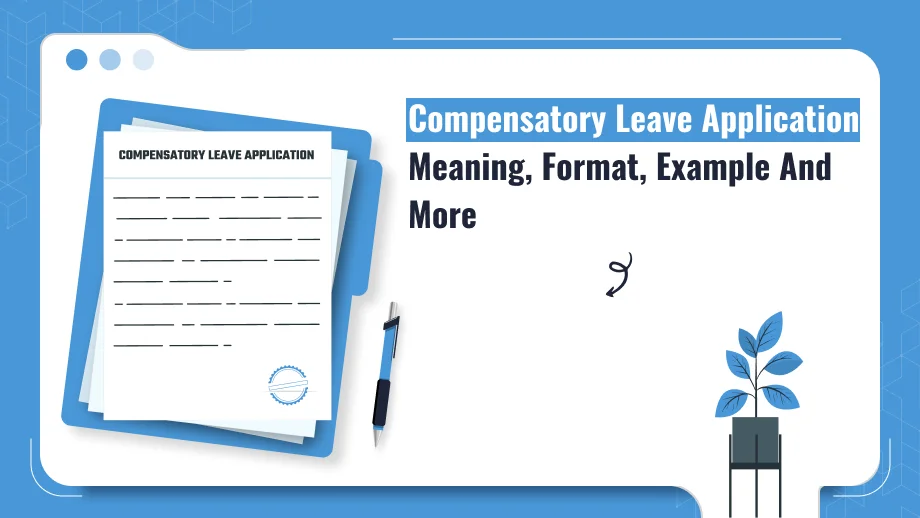Grab a chance to avail 6 Months of Performance Module for FREE
Book a free demo session & learn more about it!
-
Will customized solution for your needs
-
Empowering users with user-friendly features
-
Driving success across diverse industries, everywhere.
Grab a chance to avail 6 Months of Performance Module for FREE
Book a free demo session & learn more about it!
Superworks
Modern HR Workplace
Your Partner in the entire Employee Life Cycle
From recruitment to retirement manage every stage of employee lifecycle with ease.


Seamless onboarding & offboarding
Automated compliance & payroll
Track performance & engagement
How to write a convincing branch transfer letter: Dos and Don’t s
- Branch Transfer Letter Format
- 9 min read
- May 31, 2023

As a company, sending out interview call letters is a crucial step in the hiring process. It’s the first formal communication that potential candidates receive from us and sets the tone for the entire interview experience.
Look no further! In this blog, we’ll guide you through the dos and don’ts of crafting a compelling branch transfer letter.
Whether your employees are seeking new opportunities or you want them to work in a different environment for their professional growth, a well-written letter can make all the difference.
Note:You can download directly from here and edit as per your need.
We’ll provide you with practical tips, effective strategies, and crucial mistakes to avoid, ensuring your letter stands out from the rest.
Let’s start exploring and unlock the key to a successful branch transfer letter.
- What is a Branch Transfer Letter?
- Purpose of a Branch Transfer Letter
- Important Documents To Transfer From One Branch To Another Branch
- 6 Dos While Writing Branch Transfer Letter
- 6 Don’ts While Writing Branch Transfer Letter
- How to Write a Branch Transfer Letter?
- The Right Branch Transfer Letter Format
- Bottom Line
What is a Branch Transfer Letter?
A branch transfer letter is a formal communication sent by a company to an employee to inform them of their transfer from one branch or location to another within the organisation.
It serves as an official notification, outlining the necessary details and logistics of the transfer.
The letter typically includes information such as the effective date of the transfer, the new branch or location where the employee will be stationed, and any additional instructions or requirements associated with the move.
The branch transfer letter ensures transparency, provides clarity to the employee regarding their new work environment, and helps facilitate a smooth transition process.
Purpose of a Branch Transfer Letter
The purpose of writing a letter for branch transfer is to formally notify an employee about their upcoming transfer from one branch or location to another within the same company.
The letter serves several important purposes:
1. Notification: It informs the employee about the transfer, ensuring that they are aware of the change and can make necessary arrangements.
2. Clarity: The letter provides clear details about the transfer, including the effective date, the new branch or location, and any relevant instructions or requirements.
3. Documentation: It serves as an official record of the transfer, documenting the decision and ensuring that both the employee and the company have a written record of the communication.
4. Transparency: The letter promotes transparency by openly communicating the reasons for the transfer, such as operational needs, organisational restructuring, or career development opportunities.
5. Employee Engagement: By communicating the transfer in writing, the company demonstrates its commitment to keeping employees informed and employee engaged in the decision-making process.
Important Documents To Transfer From One Branch To Another Branch
Take a look at some of the important documents required while transferring from one branch to another branch:
1. Employee Records: This includes personnel files, employment contracts, performance evaluations, and any disciplinary or commendation records.
2. Payroll & Benefits Information: Ensure that all payroll and benefits-related documents, such as salary details, tax forms, and benefit enrollment information, are transferred to the new branch.
3. Training and Certification Records: If the employee has completed any training programs or obtained certifications relevant to their role, it’s important to transfer these records to the new branch.
4. Performance Metrics and Reports: Any performance metrics, HR reports, or targets achieved by the employee should be shared with the new branch to provide a comprehensive overview of their performance history.
5. Client or Customer Relationships: If the employee has built relationships with clients or customers, it’s important to transfer relevant contact information, communication records, and any ongoing projects or agreements.
6. Project or Task Documentation: Transfer any project documentation, task lists, or ongoing assignments that the employee is responsible for to ensure a smooth transition and continuity of work.
7. IT and System Access: Coordinate with the IT department to transfer system access, login credentials, and any necessary software or hardware requirements to the new branch.
8. Confidential or Sensitive Information: Ensure that any confidential or sensitive information is handled securely during the transfer, adhering to data protection and privacy guidelines.
Remember, the specific documents may vary depending on the company’s policies and the nature of the employee’s role.
Therefore, it’s essential to consult with the HR department and relevant stakeholders to determine the exact documents required while transferring from one branch to another.
6 Dos While Writing Branch Transfer Letter
Here are six dos to consider while notifying employees’ about transfer from one branch to another branch:
1. Be Clear and Concise:
Clearly state the purpose of the letter and provide all necessary details related to the transfer, including the effective date, the new branch or location, and any additional information or requirements.
2. Use a Professional Tone:
You should sound professional as well as respectful throughout the HR letter. Use polite and appropriate language to convey the message.
3. Provide a Reason:
If applicable, briefly explain the reason for the transfer, whether it’s due to operational needs, organisational changes, or career development opportunities.
This helps the employee understand the rationale behind the decision.
4. Offer Support and Assistance:
Assure the employee that the company will provide support during the transition process.
Offer assistance with any logistical or practical matters related to the transfer, such as relocation, housing, or necessary training.
5. Address Questions or Concerns:
Anticipate that the employee may have questions or concerns regarding the transfer.
Encourage them to reach out for clarification and provide contact information for the appropriate person to address any inquiries.
6. Express Appreciation:
Acknowledge the employee’s contributions and express gratitude for their work at the current branch.
Reinforce their value to the company and emphasise that the transfer is a reflection of their skills and potential for growth.
Read More – Crafting Re-Designation Letter: Let’s Navigate The Process!

Want to make an impression with professional HR letters? – Don’t you worry!
Get your hands on Superworks toolkit – a storehouse with 100+ temples and samples. With Superworks HR toolkit, you will no longer have to stress over drafting impressive letters and emails – you will have them on your fingertips. More than 500 professionals are already saving 80% of their time with our HR toolkit.
If you wish to craft letters and emails without investing much time and efforts, then just
6 Don’ts While Writing Branch Transfer Letter
Here are six don’ts to keep in mind
1. Don’t Use Ambiguous Language:
Avoid using vague or ambiguous language that may lead to confusion or misunderstanding.
Clearly state the details of the transfer, including the effective date, the new branch or location, and any relevant information.
2. Don’t Neglect Sensitivity:
Most HRs forget to be sensitive to the employee’s feelings and emotions regarding the transfer.
Do not make this mistake and try to avoid language that may sound impersonal or dismissive.
In addition to this, acknowledge any potential challenges or concerns they may have and offer support.
3. Don’t Provide Incomplete Information:
Next thing you should do is to check and ensure that all necessary details related to the transfer are included in the letter.
In simpler words, avoid leaving out crucial information that may lead to uncertainty or ambiguity.
4. Don’t Make False Promises:
The fourth thing to keep in mind is to be realistic in your commitments.
By realistic, we mean avoid making promises that cannot be fulfilled or guarantees about future opportunities or changes.
Provide accurate and honest information to maintain trust.
5. Don’t Assume Knowledge:
Avoid assuming that the employee is aware of certain processes or procedures related to the transfer. Provide any relevant instructions or guidelines to ensure a smooth transition.
6. Don’t Delay the Communication:
Timeliness is crucial when notifying an employee about a branch transfer.
Avoid unnecessary delays in sending the letter, as it may employee application for leave the employee feeling uncertain or uninformed.
Aim to communicate the transfer as soon as possible to allow for adequate preparation and planning.
How to Write a Branch Transfer Letter?
Just follow these steps to write a professional branch transfer letter:
1. Gather Information:
Collect all relevant details about the employee, including their personal information, current branch, desired branch, reasons for the transfer, and any supporting documents or recommendations.
2. Use Company Letterhead:
Begin the letter on the official company letterhead to give it a professional appearance and maintain consistency with company branding.
3. Salutation and Introduction:
Start with a formal salutation addressing the employee by their appropriate title and full name.
In the introduction, clearly state the purpose of the letter – to confirm the approval or denial of the branch transfer request.
4. Approval or Denial:
In the next paragraph, clearly state the decision regarding the transfer request.
If it is an approval, express congratulations and acknowledge the employee’s enthusiasm for the transfer.
If it is a denial, express appreciation for their interest and explain the reasons behind the decision.
5. Justification and Explanation:
Provide a detailed explanation for the decision, whether it is an approval or denial.
If approved, emphasise how the employee’s skills, qualifications, and performance align with the needs of the new branch.
If denied, provide constructive feedback and guidance on areas that need further development or alternative options for career growth within the company.
6. Transition Details:
If the transfer is approved, outline the next steps and necessary arrangements for the transition.
This may include discussing the timeline, paperwork, orientation, training, and any other logistics related to the transfer.
7. Assurances and Support:
Reassure the employee of the company’s support throughout the transition process.
Offer assistance in addressing any concerns or questions they may have and assure them of ongoing support from HR and relevant departments.
8. Closing and Contact Information:
End the letter with a closing remark such as “Sincerely” or “Best regards,” followed by the HR professional’s full name, job title, and contact information.
Encourage the employee to reach out for further assistance or clarification.
The Right Branch Transfer Letter Format
To save your time, here is a ready-to-use branch transfer letter template:
Bottom Line
In conclusion, writing a convincing branch transfer letter requires careful attention to detail and adherence to the dos and don’ts outlined in this blog.
By following the suggested guidelines, you can effectively communicate the transfer to the employee, maintain a professional tone, and provide necessary information and support.
Also, do not forget to be clear, concise, and sensitive to the employee’s concerns. This approach will contribute to a positive and effective work environment, where everyone can collaborate and Superworks together.
A well-crafted branch transfer letter not only ensures a smooth transition but also reinforces the employee’s value and fosters a positive work environment.
So, put these strategies into practice with the help of our HR toolkit, and create a persuasive branch transfer letter that sets the stage for a successful transfer experience.







